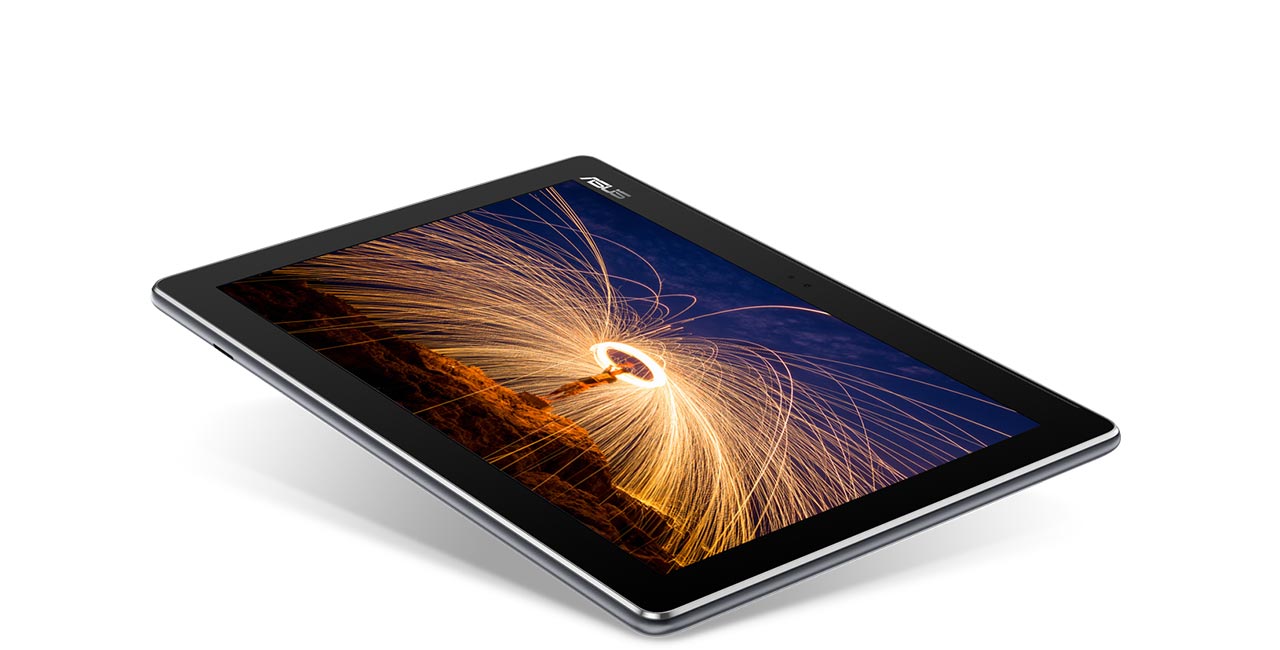
ASUS ZenPad 10
The ASUS ZenPad 10 stands out as one of the most popular and versatile tablets in ASUS's lineup. It features a 10.1-inch IPS WXGA (1920×1200) FHD display, offering excellent optical clarity and vibrant colors. Powered by an Intel MTK processor, it balances low power consumption with sufficient performance for everyday tasks.
Key Features
- Display: 10.1-inch IPS WXGA (1920×1200) FHD
- Processor: Intel MTK
- RAM: 2GB
- Storage: 16GB, expandable up to 64GB via microSD card
- Battery Life: Up to 10 hours
- Operating System: Android 7.0, compatible with the latest updates
Pros
- Versatile design with optional audio dock and keyboard
- High-quality display with vibrant colors
- Expandable storage via microSD card
Cons
- Limited RAM for heavy users
- Runs on Android 7.0, which may feel outdated
ASUS ZenPad S 8
The ASUS ZenPad S 8 is another highly-regarded model. It features an 8-inch display with a resolution of 1920×1200 pixels, making it ideal for reading, browsing, and watching videos. Powered by a Z3580 quad-core processor, it comes with 4GB of RAM and 64GB of internal storage.
Key Features
- Display: 8-inch, 1920×1200 pixels
- Processor: Z3580 quad-core
- RAM: 4GB
- Storage: 64GB
- Battery Life: Around 8 hours
- Operating System: Android 5.0
Pros
- Compact design with a 4:3 aspect ratio
- Smooth performance with the Z3580 quad-core processor
- Affordable price point
Cons
- Outdated software running on Android 5.0
- Limited storage for heavy users
ASUS ROG Flow Z13 Gaming Tablet
For gamers and enthusiasts, the ASUS ROG Flow Z13 is a top-tier option. This tablet features a 13.4-inch 120Hz IPS Type FHD 16:10 display, making it perfect for gaming and multimedia consumption. It is powered by an Intel Core i5-12500H CPU and comes with 16GB of LPDDR5 RAM and a 512GB PCIe SSD.
Key Features
- Display: 13.4-inch 120Hz IPS Type FHD 16:10
- Processor: Intel Core i5-12500H
- RAM: 16GB LPDDR5
- Storage: 512GB PCIe SSD
- Graphics: NVIDIA GeForce RTX 3050
- Operating System: Windows 11
Pros
- Exceptional gaming performance with NVIDIA GeForce RTX 3050 graphics
- High-resolution 120Hz display for smooth visuals
- Detachable RGB keyboard enhances productivity
Cons
- Expensive, priced at $783.98
- Windows 11 may be challenging for users accustomed to Android
ASUS Chromebook Detachable CM3
For those seeking a Chrome OS experience, the ASUS Chromebook Detachable CM3 is an excellent choice. This tablet features a 12-inch NanoEdge display with a resolution of 1920×1080 pixels. It is powered by a MediaTek Kompanio 820 T8192 processor and comes with 4GB of RAM and 64GB of eMMC storage.
Key Features
- Display: 12-inch NanoEdge, 1920×1080 pixels
- Processor: MediaTek Kompanio 820 T8192
- RAM: 4GB
- Storage: 64GB eMMC
- Battery Life: Up to 10 hours
- Operating System: Chrome OS
Pros
- Lightweight and portable design
- Long battery life, lasting up to 10 hours
- Seamless integration with Google services
Cons
- Limited storage for heavy users
- Chrome OS has limited app compatibility compared to Android
ASUS VivoBook 13 Slate OLED
The ASUS VivoBook 13 Slate OLED combines the best of both worlds—tablets and laptops. It features a 13.3-inch full HD OLED touchscreen display with a resolution of 1920×1080 pixels. Powered by an Intel Core i5 processor, it comes with 8GB of RAM and 128GB of SSD storage.
Key Features
- Display: 13.3-inch full HD OLED, 1920×1080 pixels
- Processor: Intel Core i5
- RAM: 8GB
- Storage: 128GB SSD
- Operating System: Windows 11
- Audio: Quad speakers for immersive sound
- Charging: Fast charging, reaching 60% in 30 minutes
Pros
- High-quality OLED display with vibrant colors
- Immersive audio experience with quad speakers
- Supports fast charging
Cons
- Expensive, priced at $559.00
- Windows 11 may be challenging for users accustomed to Android
Additional Tips
- Check Software Updates: Ensure compatibility with the latest software updates for access to new features and security patches.
- Consider Storage Capacity: Opt for tablets with expandable storage if you plan to store many files or apps.
- Battery Life: Look for long battery life if you plan to use the tablet extensively on the go.
- Accessories: Consider optional accessories like styluses or keyboards to enhance your overall experience.
- Brand Support: Check the brand's support, including customer service and warranty options, for peace of mind.
